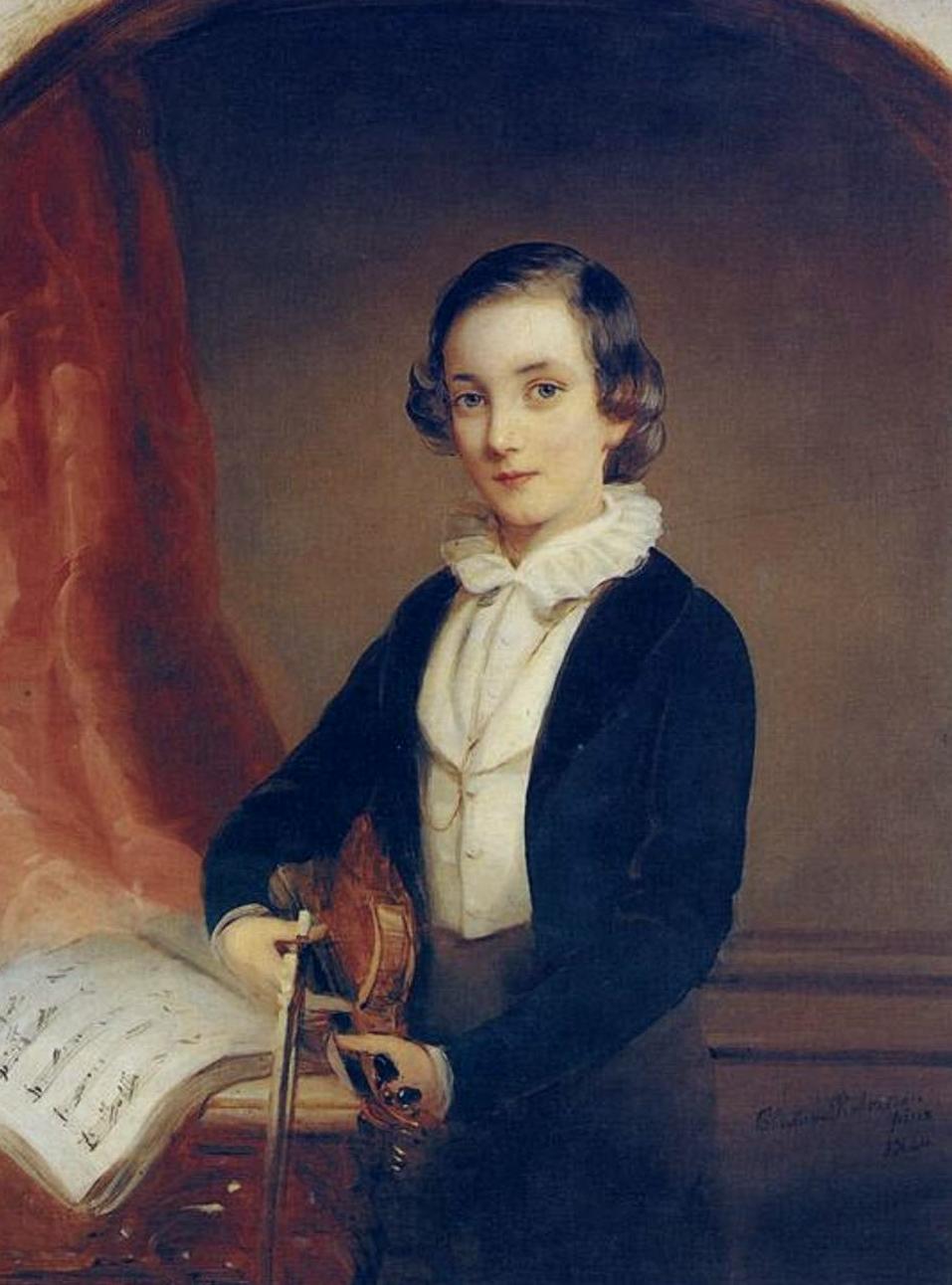
Scottish Artists: Christina Robertson -- Russian Portraits (1839-54)

Figure 1.--The boy here is Prince Nikolay Yusupov who Chrustina Robinson painted after first arriving in St. Petersburg (1839). The name is a very a very important one in Russian diplomacy. He was also one of the richest if not the richest Russian of his era. He had 31,000 serfs, not counting the women. The Prince Nikolay that is important, however, is the grandfather of the boy Roberson painted. Prince Nikolay would have been about 12 years old. Hewears a tryical period outfits for the time in Western Europe. He wears a blue velvet jack with black lapels. It looks to us like a transition between a skeleton suit of the early-19th century and the cut-away jacket suit of the mid-19th century. There is large ruffled collar, someymes clled a Shiller collar and a white vest. This is also how the Russian aristocracy and affluent dressed. Of course the great mass of the population dressed differntly, especially the large rural serf population which mostly wore tunics and baggy trousers. Also notice the long hair. | |
Cristina Roberstson was a popular Scotish society portratitst. She worked in Scotland, London, and Paris Scotland, but it best known for here work in St. Ptersburg here she painted the cream of Tsarist society, including the Rotal Family. She mostly painted socially prominent adults. Her portraits are a wonderful collection of prominent Russians in thev mid-19th century just before photography begn to make a major impact. She thus made a major contribution to Russian portraiture art. Thus while not a Russian artist, we are including her in out list of important Rusian artists in part because of the historical importance of the individuals she painted. The Scots in Russia is an interesting phenomenon. We know of military men, physicians, architects, the painter William Allen, and others. Robertson is especually interesting because of the portraits she has left us. Roberson was tempted to St Petersburg fom Paris where she was working. A factor here was that a fire destroyed mny pintings in the Winter Palace (1837). This generated many commisions to replace what was lost. Robertson arrived in St Petersburg to do an exhibition and was by the Royal Family to be the artist in residence (1839). She worked their, returning to Britain (1841). She painted the Tsarina Alexandra and her three daughters (Maria, Olga, and Alexandra). The Imperial Academy of Arts made her an honorary member. Thereafter she eturned to St Petersburg several times and finally establishing a studio there (1849). Strangely, quite a few of her patrons refused to pay. We are not sure why. Surely it was not because of quality because she hd so many commissions. We aremot sure if other artists had similar experiences in Russia. She died in Saint Petersburg (1854). The largest collection of her work is in the Hermitage.She is today seen as a relatively minor artist despite her prominance in the mid-19th century. A factor may have been the deterioration of the relationship between the British and Russian empires beginning with the Crimean War (1854-56) abd the onset of the Great Game Unlike many women artists, Robertson did not paint many children. We do not even know the name of the children in one of her most popular works -- 'Children with a parrot' (1850) which can be see on the previous page. The boy she painted here was Nikolay Yusupov (1827-91). She painted him when she first arrived in St. Petersburg. The name is a very a very important one in Russian diplomacy. He was also one of the richest if not the richest Russian of his era. He had 31,000 serfs, not counting the women. The Prince Nikolay that is important, however, is the grandfather of the boy Roberson painted. A lovely family image is the Grand Duchess Maria Nikolaevna with Her Children (1849). The Grand Duhess was the ekdest daughter of Tsar Nicholas I.
HBC

Navigate the HBC Art pages:
[Return to the Main Roberston page]
[Return to the Main Scottish art page]
[Return to the Main Russian national art page]
[Return to the Main individual artist M-R page]
[Chronology][Country][Individual Artists][Styles]
Navigate related Boys' Historical Clothing Web Site pages:
[Return to the Main Scottish page]
[Return to the Main Russian page]
[Return to the Girls 1850s page]
b>[Long hair][Dresses][Collar bows][Kilt suits][Kilts]
[Fauntleroy suits][Sailor suits][Velvet suits][Peter Pan collars]
Navigate the Historical Boys Clothing Web Site:
[Introduction][Activities][Biographies][Chronology][Clothing styles][Countries]
[Bibliographies][Contributions][FAQs][Glossaries][Images][Links][Registration][Tools]
[Boys' Clothing Home]
Created: 5:01 PM 8/16/2017
Last updated: 7:42 PM 8/17/2017



